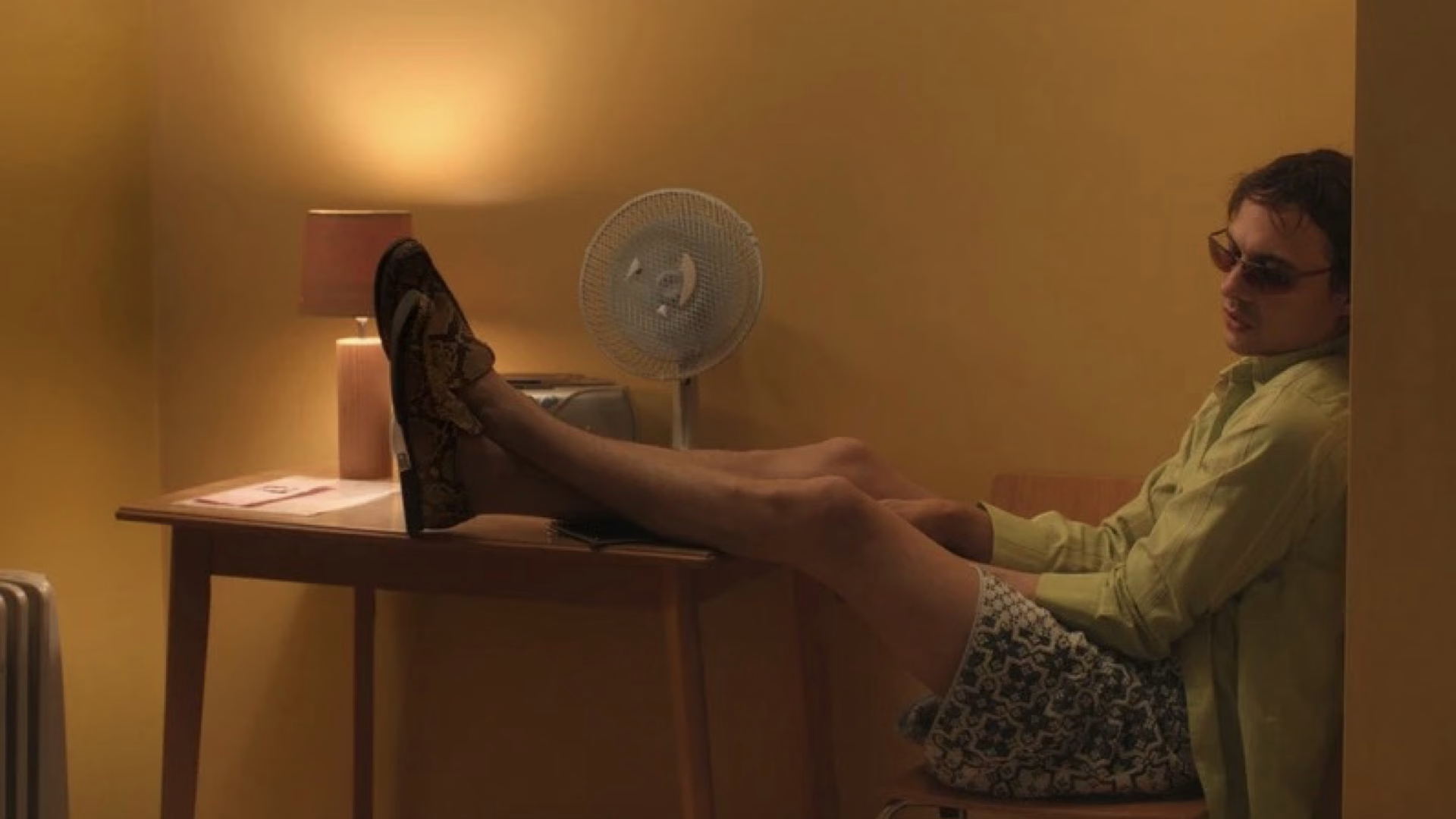Harris Dickinson’s debut feature Urchin is not a film that cares about making its audience comfortable. It is a dirty, fragile, and at times hallucinatory journey that begins on the streets of London and descends into the darkest corridors of the mind. At its center is a single body trying to survive: Mike. Homeless, addicted, clinging to the edge of a new beginning while knowing that his grip could slip at any moment.
The film does not follow the familiar “fall–recovery–hope” template of addiction narratives. On the contrary, it focuses on just how fragile the very possibility of hope is. In doing so, it weaves harsh social realism together with psychological surrealism.
The Unseen Face of London: Mike’s Shrinking Universe
We enter Mike’s life at a post-prison “fresh start” moment. The light shone on him is anything but romantic; there is no saviour system, no miraculous second chance. A tiny room, a fragile job prospect, a hostel run by strict rules… In other words, a structure that looks possible on paper but could crumble at any second in reality.
Urchin does not treat homelessness as sociological background data; instead, it places the marks it leaves on body, mind and emotion at the very centre. Mike’s relationship with the city is told not through places but through the feeling of exclusion: train stations, back alleys, temporary shelters—every one of them carries the sensation of “a place you cannot stay.”
In this sense, the film presents London less as a backdrop and more as a machine that sifts, sorts, and discards its characters.
Social Realism + Psychological Surrealism: Falling Into the Mind
The film’s most striking feature is its courage to place raw realism side-by-side with hallucinatory sequences. Symbolic scenes suddenly seep into the blurred, grey, grimy images of everyday life—like short, brutal cracks opening into Mike’s inner world.
These sequences portray addiction not as “a state of using substances” but as the slow unraveling of the mind. Reality, guilt, trauma and regret do not progress along a single straight line; they move in a fragmented, repetitive loop.
For some viewers this structure will undoubtedly feel exhausting and demanding. Yet that very tonal instability is the aesthetic equivalent of Mike’s mental fracture. The film refuses to build a comfortable narrative; especially in its final section, the boundary between reality and hallucination becomes razor-thin.
Frank Dillane: A Bodily Performance, the Weight of a Broken Man
Frank Dillane, playing Mike, is the film’s backbone. He delivers a performance so physical—so much “pushing against the skin from the inside”—that the story’s emotional weight is carried not by dialogue but by the way shoulders slump, eyes drift into emptiness, tiny tics.
The Best Actor award in Un Certain Regard at Cannes was no coincidence; Dillane offers a vulnerability that is almost transparent, far beyond the usual addict-character clichés. He neither romanticises nor demonises. He shows how a person can be torn to pieces while fighting the system and himself at the same time.
Harris Dickinson’s instinct as an actor is clearly at work here: the camera never lingers on Mike with a pitying gaze, yet it never judges him either. That absence of distance opens up a huge space for empathy while at times creating an unsettling closeness for the viewer.
Addiction, the System, and Beyond Blame
Urchin reads addiction not as moral collapse but as a cycle with no exit. One of the film’s most painful aspects is Mike’s repeated intention to “be good,” countered by a system too weak to carry that intention.
Rehabilitation, support mechanisms, social services… They exist on paper, but in practice they always lag one step behind. The film never resorts to slogans, yet it is honest enough to make you feel how inadequate institutions are when it comes to trauma and addiction. Mike’s relapses are not “weakness”; they are the inevitable crashes of someone falling through the holes in the system.
For this reason, Urchin is not just “a film about an addict”; it is also an extremely harsh text about the city, poverty, invisibility and modern loneliness.
Structure, Tempo and Divisiveness
Even the film’s rhythm is deliberately uneven. Some scenes leave you breathless; at other moments Urchin almost stalls, waits, crawls. For some this may read as a flaw. But when you consider Mike’s mental state, the fluctuation feels utterly organic.
The surreal sequences may feel “too much” for certain viewers; especially for those expecting a more classic, linear addiction story, the film can become “difficult viewing” after a certain point. Yet it is precisely these ruptures that place Urchin squarely in the heart of festival cinema.
Who Is Urchin For?
- For viewers who say “let it be a bit heavy but real,”
- who love character-driven, performance-centred films,
- who appreciate cinema that tackles social issues without romanticising or polishing them,
- who don’t shy away from surreal touches and open-ended finales
Urchin offers a powerfully affecting experience.
For those seeking comfort, clear answers, or an addiction story framed with “hopeful” uplift, the film may feel heavy, even draining.
Apartment No:26 Note
Difficult, Naked, and Unforgettable
Urchin fits comfortably under the “prestige indie drama” label, but what truly makes it special is that it never sacrifices emotional honesty. In his debut, Harris Dickinson refuses to smooth any corners for the sake of a polished narrative. The structure sometimes wobbles, the tempo scatters, but the emotional truth never drops.
In the end, what remains in your mind is the face of a man on the edge of London—a man the city pretends not to see. Looking at the ground, leaning against a wall, trying to hold on to something…
Urchin is one of those films that tires you while you watch it, yet you cannot easily forget once it’s over.














